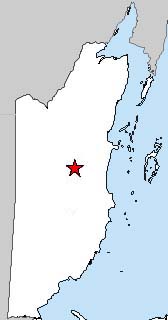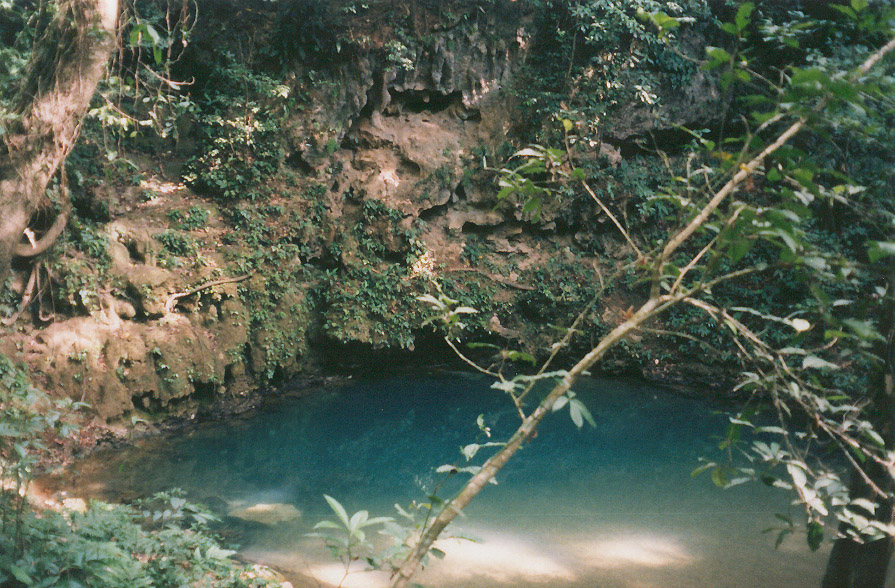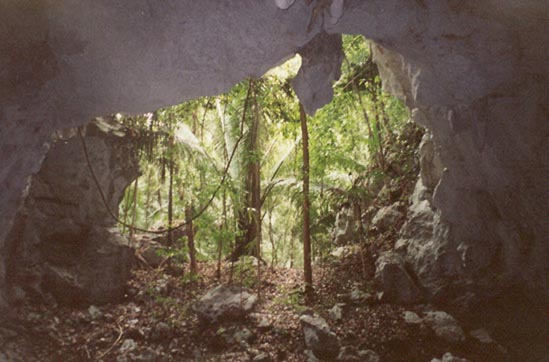 |
 |
Blue Hole National Park
 |
 |
The Blue Hole National Park was established in December 1986. Located 12 miles southeast of the nation's capital, Belmopan, BHNP contains 575 acres of primary and secondary forest growth. From its northern boundary, the Hummingbird Highway, this rugged karst landscape quickly rises to elevations in excess of 200 meters. Through and under BHNP flow some of the upland tributaries of the Sibun River, one of Belize's principal watercourses. This region contains great quantities of limestone from the Cretaceous age and includes such karstic features as underground streams, rivers, sinkholes, cenotes and extensive subterranean caves systems. The principal attractions at BHNP are the Blue Hole and St. Herman's Cave.
The Blue Hole

The Blue Hole is a popular recreational spot where water emerges from its subterranean journey into the base of a collapsed karst sinkhole as it makes its journey to the Sibun River. The sinkhole itself is approximately 100 feet deep and is roughly 300 feet in diameter. The sapphire pool, approximately 25 feet deep, gives the area its name. After a short exposed run through lush, green embankments, the stream disappears once more into a large underwater cavern.
St. Herman's Cave

A hiking trail from the Blue Hole visitor's center leads to the nearest of the three known entrances to St. Herman's Cave - a large sinkhole, 60 meters wide, funneling to a 20 meter entrance to the cave. At the main entrance, there is a series of concrete steps constructed over the original Mayan steps, which were built during the Classic Period of Mayan history (0 - 900 A.D.). The cave once housed various article of archaeological importance. Pottery vessels, used for the collection of "Zuh uy Ha" or virgin water from cave drippings, along with spears and torches have been removed from St. Herman's Cave for study by the Department of Archaeology in Belmopan.A wide variety of wildlife makes it home in BHNP. Mammals that have been sighted within the park include ocelot, jaguarundi, tapir, collared peccary, tamandua, paca, squirrels, coati, opossum, white tailed and brocket deer, kinkajou, bats and armadillo. Some of the more common reptiles seen in the park are iguanas, green snakes, black tail snakes, and fer-de-lances. The park's most abundant and frequently seen animals are birds. Well over a hundred species of of birds have been recorded in the park including the slaty-breasted tinamou, spotted wood-quail, black hawk-eagle, white hawk, crested guan, keel-billed toucan, blue-crowned and tody motmot, slaty-tailed trogon, cotinga, nightingale wren and red-legged honeycreeper.